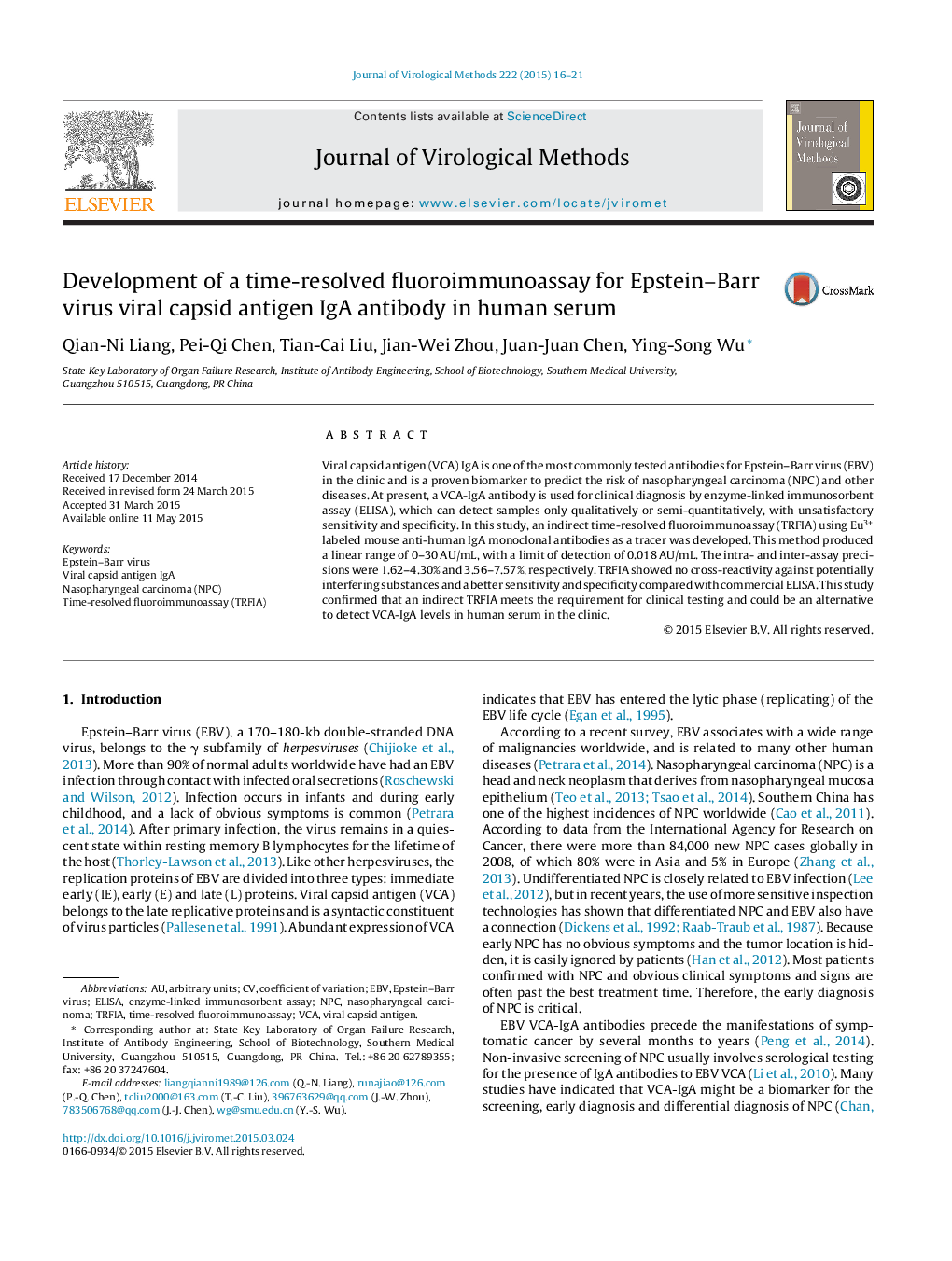| Article ID | Journal | Published Year | Pages | File Type |
|---|---|---|---|---|
| 6133168 | Journal of Virological Methods | 2015 | 6 Pages |
â¢A new approach for determining Epstein-Barr virus viral capsid antigen IgA antibody.â¢Validation of methodology was performed.â¢Application was demonstrated using practical samples, with satisfactory results.â¢Sensitivity/specificity is satisfactory and quantification is more precise than ELISA.
Viral capsid antigen (VCA) IgA is one of the most commonly tested antibodies for Epstein-Barr virus (EBV) in the clinic and is a proven biomarker to predict the risk of nasopharyngeal carcinoma (NPC) and other diseases. At present, a VCA-IgA antibody is used for clinical diagnosis by enzyme-linked immunosorbent assay (ELISA), which can detect samples only qualitatively or semi-quantitatively, with unsatisfactory sensitivity and specificity. In this study, an indirect time-resolved fluoroimmunoassay (TRFIA) using Eu3+ labeled mouse anti-human IgA monoclonal antibodies as a tracer was developed. This method produced a linear range of 0-30Â AU/mL, with a limit of detection of 0.018Â AU/mL. The intra- and inter-assay precisions were 1.62-4.30% and 3.56-7.57%, respectively. TRFIA showed no cross-reactivity against potentially interfering substances and a better sensitivity and specificity compared with commercial ELISA. This study confirmed that an indirect TRFIA meets the requirement for clinical testing and could be an alternative to detect VCA-IgA levels in human serum in the clinic.
Graphical abstractDownload full-size image
